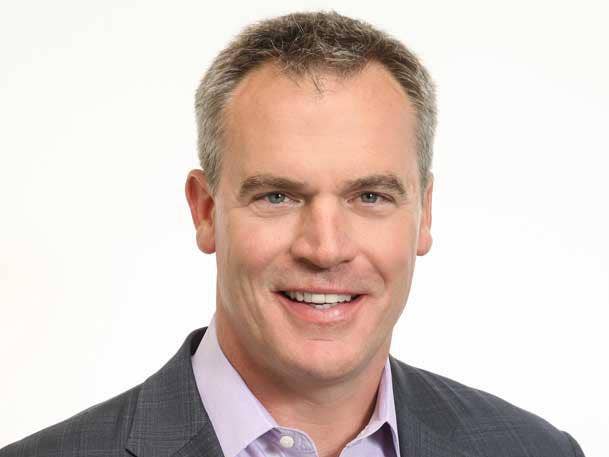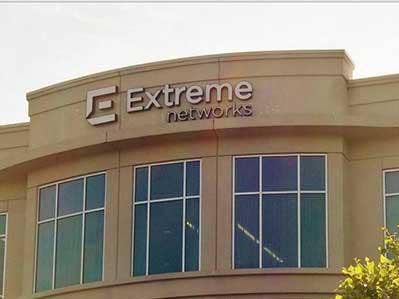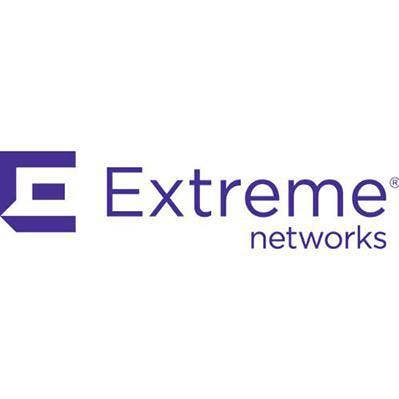Extreme Networks CEO: Beating Cisco An ‘Exclamation Mark’ On Fiscal Year 2022
“We’re the right size company to work with. Partners feel like when they work with Extreme they can make a difference and they can influence our decision making. I’m not sure that’s true with our competitors,” Extreme Networks’ CEO Ed Meyercord tells CRN following the end of the company’s record-breaking fiscal 2022.

Smaller, Yet Mighty
Extreme Networks’ fiscal 2022, which ended in July, was highlighted by year-over-year double-digit booking growth that beat out what its competition — namely, Cisco — is doing, according to company CEO Ed Meyercord. Extreme in its most recent quarter saw 24 percent bookings growth compared to Cisco’s most recent quarter of product order growth, up 8 percent year over year.
During the San Jose, Calif.-based company’s final fiscal quarter of 2022, which ended June 30, Extreme’s product backlog grew to $513 million. The company landed a record 208 new, large customers, which included LG Electronics and SK Telecom. Extreme saw total SaaS subscription bookings growth of 58 percent year over year. Overall, it posted 10.2 percent revenue growth year over year, which Meyercord compared to Cisco’s flat revenue during its most recent quarter. “It’s just a clear exclamation mark on the fact that Extreme is taking share in the marketplace,” Meyercord told CRN.
Still, supply chain issues continue to impact Extreme just as it does nearly every other company across many industries and verticals. The company’s record backlog needs to be addressed to turn orders into revenue for both Extreme and its partners. The work is happening, and Extreme expects to unlock revenues for these high-quality orders by next summer. Meanwhile, partners are to thank for many of the large customer wins that Extreme landed in fiscal 2022. To that end, the company is sharpening its focus on the channel with a handful of new benefits for partners and headcount – which includes newly-hired Scott Peterson as channel chief – to help partners grow even faster.
After another strong fiscal quarter of continuing to gain market share via organic growth and battling supply chain challenges, Meyercord talked with CRN about all the progress, partner program updates and the company’s passion for DEI. Here’s what Meyercord had to say.

How does Extreme's most recent fiscal quarter highlight how you're winning against the competition?
We grew our bookings by 24 percent and Cisco and the industry are growing by about 8 percent, so, it’s just a clear exclamation mark on the fact that Extreme is taking share in the marketplace, and we’re doing it both in the enterprise, as well as in the service providers space with our 5G solutions. I can tell you that growth is spread across all of our geos when we look at the strength and performance in the Americans, in EMEA, in Asia-Pacific. When we look at overall industry vertical growth, our solutions have been very successful across the board, across our verticals, so, it’s just this very evenly spread, organic growth that we’re experiencing at Extreme. It means that we’re taking share.
We’re attracting talent at Extreme like never before, and the caliber and quality of talent is quite high. Our employee turnover and attrition is very low in a market where it’s very high. For us, $1.1 billion was a record year for revenue, which was 10 percent growth. And what we’re calling for going forward is 10 to 15 percent growth. And what is interesting, looking back at the 10 percent growth of $1.1 billion, is that we built up an incremental $400 million in backlog, so there’s real demand in the marketplace and these are high-quality orders because these are important infrastructure projects. There’s $400 million in high-quality orders just waiting on a supply chain, so in a way, we’re masking the real results because we can’t ship the product and recognize revenue until we do that.

How big an issue is supply chain in meeting the demand for Extreme’s record bookings?
We have a record backlog now of $513 million [and] from a product perspective, it’s over half of your product. If we look at our funnel of opportunities, which is a leading indicator for us, all the sales teams put in all the opportunities this year, versus where we were last year, we were well into the double-digits again, and that’s a leading indicator of growth for Extreme. So, the strength that we’ve seen is continuing as we turn the corner and we’re more confident today in terms of our ability to step supply up. With all the initiatives taken, the magnitude of our backlog, our teams are calling for sequential steps in the release of supply, which will create 10 to 15 percent of revenue growth. Everyone is talking about this book to bill ratio, which is what are we selling and booking and what are we shipping out. In a normal world, we would be one to one. But we’ve been booking so much more, which is why we’re building the backlog. But what we’re saying is we see this coming together in our fourth [fiscal] quarter of next year. That’s what we think we’ll turn over and then start to actually bring down that load. And that’s what we’re so excited about at Extreme is that we will be by far the fastest growing player in our industry. No one will be close. We’re going to unlock this wave of very high revenue growth.
It also means investment. We’re really excited about what we’re going to be able to do as far as investing in future growth and that that relates to innovation on the product side. We’re innovating with our cloud, we’re coming out with our AIOps, Digital Twin, and CoPilot, our AI/ML tool for higher performance in the network, and then the evolution of our hardware portfolio with the continuation of universal platforms. The most flexible hardware in the industry for the enterprise. All of these are kind of coming together — the fabric, the core, the campus — and then the extension of fabric out to the edge, all managed with our cloud. Then, with SD-WAN we’ve just launched, now we can extend beyond the campus, across the wide area network, from the same. And that’s the difference between us and everyone else. People have the capability to some degree, but with Extreme, you can manage all this with one cloud.

How has Extreme upped partner benefits and how much are partners contributing to the company’s record growth?
We’ve been a channel-led company since I’ve been here, but here’s what’s interesting: our teams in EMEA led performance because they were early adopters in really focusing on how we embrace the cloud and how we were enforcing some of the automation tools to allow the channel to be a force multiplier for us. Maybe easier for them to transact, etc., to help us in generating new logos, and then to use our teams to be specialists to work on bigger projects. One of the things that we had was the number of customers that we had transacting with Extreme — doing over a million dollars in business — grew 30 percent over the course of this past year, and that is a direct result of the work we’re doing with the channel. We’ve reorganized some key resources and we’ve also recruited. We have a new global channel chief, Scott Peterson, [who] is very talented. We just hired another head of channels in the Americas, Jennifer Orr, and she’s incredibly talented — I was meeting with one of our distributors and they said: “Great hire!” These are just some of the steps up — we’ve never had the caliber of this team, first of all, and then the investments that we’ve made. Channel Self-Serve, for example. It used to be, four years ago, an extreme [direct] seller had to place an order [for a partner]. Now, it’s [about] 70 percent of orders just flowing through without anyone touching. So, it’s just a continual process. Now, with the new team we have in place, the new programs we have in place, and how we organize to support the customer, it’s like everything is positioned to really emphasize channel. And we have buy-in.
[Customers like] LG Electronics — a big win to us this this quarter — and SK Telecom, another big one. We, up until this point, have been very directly focused on those customers. We’ve embraced the channel now in that market. We’ve seen a huge number of new logo wins that are outside the traditional business. Why? Because of the channel. So, that’s just it’s kind of another proof point. The evidence is really overwhelming that it’s really time for us to go take share. Our partners are watching us win and they like the ease and simplicity of our solution. They see what our technology is and the ease of deployment and the customer response. We’re the right size company to work with. Partners feel like when they work with Extreme they can make a difference and they can influence our decision making. I’m not sure that’s true with our competitors.

How can partners become involved with Extreme’s DEI focus?
Extreme is absolutely crushing [diversity, equity, and inclusion] DEI and it’s really fun. Talk about why it’s fun to work at Extreme, it’s organic, it’s real, things are happening [and] the needle is moving. DEI is going to be front and center at our partner conference in Boston [this week] and we want to help our partners go on that journey. And we want our partners with us. We’re doing a ton of early career [work], which is a great way for us to attract diverse talent. We have very specific internship programs that that that we’ve developed and are growing. We just won the biggest [historically black college or university] HBCU university in the country, North Carolina A&T State University. One of the things we have there is our Extreme Academy. It’s free and we have a very specific curriculum with different courses that people can take to get educated around generic networking, and then it gets more and more specific around our solutions. So, we can partner with, for example, North Carolina A&T, development a curriculum and a program and they can start using their own students to start working on their own network, which is leveraging Extreme. And our partners can support and hire them and we can hire them. It also helps our partners tap into an ecosystem early in their careers and start developing these career paths. And it’s just this one thing that’s really taken off in a really good way. We’ve doubled down on Extreme Academy and that’s another area where we support partners. We’re developing a whole educational and training program that’s been revamped and completely upgraded. I think it’s going to be very well received by partners. Even Tiger Woods still has a Swing Coach, right. You can always keep learning.
What we’re doing isn’t corporate, build a department, spent a ton of money and then start doing top-down initiatives. At Extreme, it’s organic, grassroots, and just taking off and growing. Another example is we just renamed our Women’s Council, which is called WIN — women in networking. A few years ago, we started the Women’s Council and that spawned all these other [employee resource groups] ERGs that have been successful for us. But WIN isn’t just for women, it’s our allies, [too]. We have a huge number of allies that are big believers in diversity. So, when they hold events, it can be for everyone in the company, sponsored by WIN. And by the way, that’s open for partners too … a lot of our competitors are big companies, and they have big corporate staffs and people who are mandating corporate activities that don’t ring true. This is very pure, organic, and really part of the culture for us.

What should partners expect from Extreme’s fiscal 2023 and the rest of 2022?
This is the year of the channel for Extreme. Our lead times are as good as anyone else’s or better and everyone’s focused on supply. At this stage, we’re very confident in our ability and how we deliver is very top of mind for people. This means that we’re going to be unlocking their business, which will be very good for [partners] because it means growth. We’re calling for 10 to 15 percent growth. That’s just very first step of what’s going to be even higher growth in the coming years, and we have ability to unlock this giant backlog we have [and] all that means investment. So, I think there’s going to be a lot of excitement. We want to listen to our partners — we do a good job with that — And then we can move faster than the large companies. Our partners will know that we’re listening to them. They’ll see how we’re acting. They’ll be inspired by how quickly we respond. I think they’ll be really excited about all the investments.